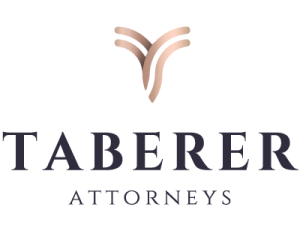Entrepreneurship is associated with fresh, new, innovative or original ideas. This “newness” comes from the solution that the entrepreneur provides after identifying a gap in the market. The newness may be found in the entrepreneur’s:
- novel approach to an established way of doing business;
- new business idea or the provision of a new service; or
- new product or new design to an existing product.
It will be helpful to the entrepreneur to understand each type of innovation and how best to protect her intellectual capital; her most important asset as an entrepreneur in this knowledge driven economy.
This intellectual capital can only become an asset or an item of property (intellectual property or IP) if it has been identified and then legally protected. If the entrepreneur does not recognise her innovation as such or does but does little to protect it, then the innovation will fall into the public domain, free for all to use.
Understanding where an entrepreneur’s intellectual property resides is complicated by the Patents Act which specifically excludes from patentability, a method of doing business. So, the pure methodology employed in the entrepreneur’s business must be distinguished from the technology that enables the business method. This discussion, hopefully, will assist in such an understanding.
A novel approach to an established way of doing business
This type of innovation could involve, for example, using contemporary technology to provide an existing service more efficiently.
Specific examples abound. One such specific example is the rise of food delivery services using an app-based interface between the restaurants or fast food outlets and the customer. In the past, the customer would have to call the delivery service, he would not have an idea of the status of his order and he would have to have cash ready when the food was delivered.
With the app interface, all these problems are solved – with an ease of ordering, tracking the order and paying for the order.
The innovation lies, not in the business of having an intermediary delivery service between restaurant and customer, as these types of services have been around for decades – it is in employing a novel approach of making this service better. The innovation comes in the development of a tool, typically an IT tool and, in this case, an app.
In this example, the intellectual property resides in the app. However, what exactly is this intellectual property and does the entrepreneur have to do anything once the app is developed, to get this intellectual property?
Apps
Because of the commonplace nature of apps, special mention is deserving of this type of innovation.
Apps are being developed for use as a business tool amongst others, at an astounding rate. Think of UBER, banking apps in general and payment apps like Snapscan. They have become part of the way in which we conduct and manage our lives.
An app is software that is specifically developed for smart phones or tablets. Apps are, at their most basic, a set of instructions to the device on which they are loaded on how that device must function to output or do something.
The app has copyright in its various aspects the moment it is developed. There is no need for the developer/entrepreneur to do anything else. The protection brought about by copyright occurs automatically. A person who copies or adapts your code will infringe your copyright and you can use this right to stop that person and to claim any losses that you may have incurred as a result of his infringing actions. This is done by approaching the courts to assert this right, typically with the help of an attorney.
The frontend look and feel, as an output function of the app as displayed on a screen, is also the subject of copyright. And again, if someone was to appropriate this look and feel, they would infringe your copyright in the artistic work that is the displayed on the app page.
The limitation with copyright is that it protects the original sequence of code from being copied – it does not protect the concept for which the App enables. If protection is sought for the concept, then the concept needs to be investigated to decide if the concept is a new business idea or the provision of a new service.
A new business idea or the provision of a new service
A good example of a new business idea in the South African context, is the “please call me” service.
A trainee accountant in the employ of Vodacom came up with the idea of a new service (for Vodacom it would be described as a new business idea) that would allow a person who has no airtime or SMS units to send a message to the person he wants to contact requesting the person to call back. The employee discussed the idea with his employer and there was an oral agreement that the employer would be remunerated for the idea. The story goes that the agreement was never honoured despite Vodacom putting the idea into practice and making money from the provision of the new service.
From the point of view of fairness, few people would argue against the employee being deserving of remuneration for his idea. However, the point of this article is to discuss how that employee could have better protected his intellectual property and prevented his employer from appropriating it for their own gain.
The employee’s idea was just that, an idea. An idea in itself does not make an invention. An invention can be patented, if new and inventive, an idea cannot. An idea is an objective, a plan or a policy. An invention gives meat to the idea by providing the technical detail as to how the idea will be put into practice to solve a problem. The employee therefore would not have been able to patent his idea as it did not come with new and inventive technical detail on how the idea would be achieved. And, as the employee did not write any software to enable the idea, copyright was not relevant.
Without the ability to patent, the question then is: what other class of intellectual property could the employee rely upon for protection? Unfortunately, not much.
The only protection is that achieved by contract. In the above example, the courts ruled that the employee was entitled to remuneration, but this was only because of the oral agreement that he had reached with Vodacom promising him remuneration.
It is important when proposing an idea to someone, and this idea has not evolved to an invention, to understand your vulnerabilities and to accept that at this early stage of the innovation pipeline, you do not have the ability to file a patent or rely upon copyright. Therefore it is important to bind in contract to respect the confidentiality of your idea and to reach a commercial agreement if the person receiving the idea, likes the idea and wants to commercialise it. This type of agreement is often referred to as a non-disclosure agreement or NDA.
A new product or a new design to an existing product
If the entrepreneur conceived a product that is previously unknown, not just in South Africa, but worldwide, then we have a new product that may well be patentable. The entrepreneur should approach a patent attorney to help her assess the patentability and to prepare a patent application. Once a patent is granted, the entrepreneur has an intellectual property asset that can be asserted to stop an infringer from copying her product. The patent can also be licenced to someone else to make the product, for payment of course.
A few famous examples of new products invented by South Africans include the Kreepy Krawly and Pratley’s Putty.
If the entrepreneur has applied a new look or design to an existing product, this new look product cannot be patented, as the product already exists, but he can file a design application to the new design applied to the product. A good example of a South African business that applies new design to existing product is Carol Boyes. This business applies beautiful design to every day products such as knives, forks, spoons and bowls.
A registered design, like a patent, is an item of property that can be sold, licensed or used within the business to stop others from making product with the registered design.
Trademarks
What must not be forgotten, of course, is the intellectual property in what you call your business or your product. In the examples given above, the words Uber, Kreepy Krawly, Pratleys, Snapscan and Carol Boyes are all trademarks. Trademarks are often referred to as brands.
Trademarks are potentially very valuable IP assets in that they can become well known over the years, like the examples above, holding value in the reputation that has accrued to the trademarks for the goods or services to which they are applied.
It is advisable as a new business to apply for a trademark to the mark that you are going to use to describe the goods or services that your business provides. This trademark must not be confused with the name that you call your company when you register a company, although the name of the company and your trademark can, and is often, the same.
For help with protecting your IP please contact us on +27 21 712 5087 or connect@tabererattorneys.co.za

